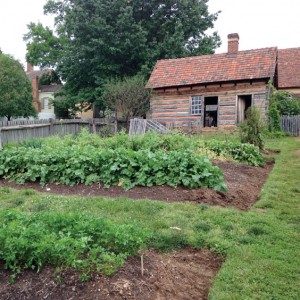Enjoy the sweet and savory tastes of Moravian culinary specialties in Winston-Salem, North Carolina.
Written by Nancy Meeks
The towns of Winston and Salem in North Carolina were officially joined into one municipality in 1913, but this modern city traces its roots to the settlement of Salem and far beyond. Salem was founded in 1766 by a religious group called the Moravians, who were originally from Moravia and Bohemia in the modern-day Czech Republic. They brought their deep religious faith, strong work ethic, and artistic and culinary traditions with them.
The best place to start your Moravian food tour is at Old Salem Museums & Gardens, a living-history experience of what life was like for the Moravians and still the home of an active modern Moravian community. Within the restored and preserved homes and community buildings, you can take part in open-hearth cooking demonstrations using the food that is grown on-site. There are numerous gardens and orchards, as well as restored dome ovens that were used for communal baking.
[fusion_builder_container hundred_percent=”yes” overflow=”visible”][fusion_builder_row][fusion_builder_column type=”1_1″ background_position=”left top” background_color=”” border_size=”” border_color=”” border_style=”solid” spacing=”yes” background_image=”” background_repeat=”no-repeat” padding=”” margin_top=”0px” margin_bottom=”0px” class=”” id=”” animation_type=”” animation_speed=”0.3″ animation_direction=”left” hide_on_mobile=”no” center_content=”no” min_height=”none”]
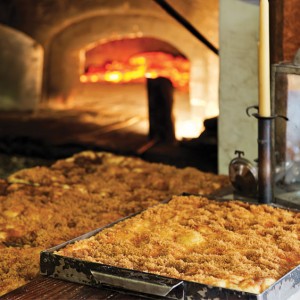
Winkler Bakery, founded in 1800 in Old Salem, contains the oldest continually operating wood-fired dome oven in the United States, and here you’ll find two of the oldest versions of traditional Moravian desserts: Moravian ginger cookies and sugar cake. Ginger cookies are made from a stiff dough flavored with molasses, ginger, cinnamon, and other spices and are rolled out paper-thin before cutting. One batch of dough makes dozens and dozens of cookies, and once baked, they are light, crisp, and keep exceptionally well.
Moravian sugar cake starts with a bread-like yeast dough that’s pressed into a large rectangle and left to rise. Once risen, indentations are made all over the dough with your fingertips, and a butter and brown sugar topping is poured onto the dough before it’s baked. It’s said that Moravian men sought women with big fingers because that meant that more buttery sweetness would make it into the nooks and crannies of the cake. Both the cookies and cake are popular year-round but are an essential presence at the family table during the holidays.
[/fusion_builder_column][fusion_builder_column type=”1_1″ background_position=”left top” background_color=”” border_size=”” border_color=”” border_style=”solid” spacing=”yes” background_image=”” background_repeat=”no-repeat” padding=”” margin_top=”0px” margin_bottom=”0px” class=”” id=”” animation_type=”” animation_speed=”0.3″ animation_direction=”left” hide_on_mobile=”no” center_content=”no” min_height=”none”]
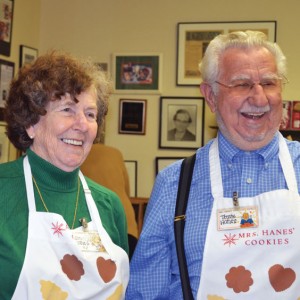
Another great source for Moravian cookies is Mrs. Hanes’ Moravian Cookies. Evva Foltz Hanes grew up baking the traditional cookies with her mother, who would sell them around the holidays for extra income. Evva took over the baking as an adult, and gradually the business expanded. Today the company is run by Evva, her husband, Travis, and their adult children, but one thing has never changed—everything is done by hand. The company makes more than 110,000 pounds of dough annually, and every cookie—some 10 million of them—is rolled, cut, and packaged by hand. You can tour the facility and see their artists in aprons work at their craft. Mrs. Hanes’s cookies come in sugar, lemon, chocolate, butterscotch, and black walnut flavors, in addition to the classic ginger.
[/fusion_builder_column][fusion_builder_column type=”1_1″ background_position=”left top” background_color=”” border_size=”” border_color=”” border_style=”solid” spacing=”yes” background_image=”” background_repeat=”no-repeat” padding=”” margin_top=”0px” margin_bottom=”0px” class=”” id=”” animation_type=”” animation_speed=”0.3″ animation_direction=”left” hide_on_mobile=”no” center_content=”no” min_height=”none”]
Although not as well known as ginger cookies or sugar cake, chicken pie is another Moravian specialty. It’s somewhat similar to chicken pot pie, but if you call it chicken pot pie, the locals will gently but firmly correct you and explain the differences. Chicken pie has big shreds of poached chicken layered between pastry crusts and is baked in a pie plate. Servings are topped with a savory cream gravy, and vegetables are on the side, not inside the pie. It’s hearty, warming, and very good. For an authentic taste of chicken pie served in a historic environment, head to The Tavern in Old Salem, run by Executive Chef Jared Keiper and his family.
Moravian culinary specialties are not limited to the historic areas of Winston-Salem. You’ll find these traditional dishes and modern interpretations of them all over the region. For more information and to learn about additional places to find these sweet and savory creations, go to visitwinstonsalem.com/moravianculinarytrail.
The Reynolds Family Legacy
[/fusion_builder_column][fusion_builder_column type=”1_1″ background_position=”left top” background_color=”” border_size=”” border_color=”” border_style=”solid” spacing=”yes” background_image=”” background_repeat=”no-repeat” padding=”” margin_top=”0px” margin_bottom=”0px” class=”” id=”” animation_type=”” animation_speed=”0.3″ animation_direction=”left” hide_on_mobile=”no” center_content=”no” min_height=”none”]
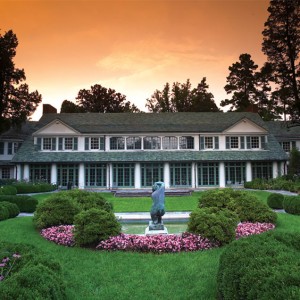
In 1875, R.J. Reynolds established a tobacco factory in Winston, North Carolina, and became enormously successful over the next few decades. In 1906, his wife, Katharine, began acquiring land for Reynolda, the family’s future homestead. In December 1917, R.J., Katharine, and their four children moved into the 1,003-acre self-sufficient estate with farm, village, and gardens. In the 1960s, Reynolda became a nonprofit institution dedicated to the arts and education, and it currently functions as a world-class museum and art gallery. Much of the estate can be toured today, including the main house, restored formal gardens, and wildlife habitat. Visit reynoldahouse.org and reynoldagardens.org for more information.
[/fusion_builder_column][fusion_builder_column type=”1_1″ background_position=”left top” background_color=”” border_size=”” border_color=”” border_style=”solid” spacing=”yes” background_image=”” background_repeat=”no-repeat” padding=”” margin_top=”0px” margin_bottom=”0px” class=”” id=”” animation_type=”” animation_speed=”0.3″ animation_direction=”left” hide_on_mobile=”no” center_content=”no” min_height=”none”]

One of downtown Winston-Salem’s newest hotels, The Kimpton Cardinal Hotel, is located in the historic R.J. Reynolds Building. Completed in 1929, the 314-foot Art Deco skyscraper became the architectural inspiration for the Empire State Building. The hotel’s restaurant is named The Katharine in honor of Mrs. Reynolds. Visit thecardinalhotel.com for details.
Yadkin Valley Wine Trail
[/fusion_builder_column][fusion_builder_column type=”1_1″ background_position=”left top” background_color=”” border_size=”” border_color=”” border_style=”solid” spacing=”yes” background_image=”” background_repeat=”no-repeat” padding=”” margin_top=”0px” margin_bottom=”0px” class=”” id=”” animation_type=”” animation_speed=”0.3″ animation_direction=”left” hide_on_mobile=”no” center_content=”no” min_height=”none”]
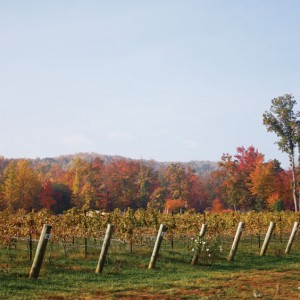
Running throughout the Piedmont region of North Carolina between the Blue Ridge Mountains and the Yadkin River, you’ll find more than 40 vineyards and wineries that make up the Yadkin Valley Wine Trail, a federally designated American Viticulture Area. Many of the vineyards are former tobacco farms, and it’s an easy drive from the heart of Winston-Salem to explore the trail. You’ll find dozens of places to try a diverse range of red and white varieties as well as sweet dessert wines.
Highlights along the trail include llama trekking at Divine Llama Vineyards, farm-to-table lunch or dinner from Executive Chef Christian Froelich at Hearth Restaurant located within Sanders Ridge Winery, and sweeping views of the mountains while sipping Italian-style wines at Raffaldini Vineyards, known as the “Chianti of the Carolinas.” Visit yadkinvalleywinetrail.com or yadkinvalleywinecountry.com for more information.
This content originally appeared in the November 2016 issue of Cooking with Paula Deen magazine. ©2016 Hoffman Media
[/fusion_builder_column][/fusion_builder_row][/fusion_builder_container]


